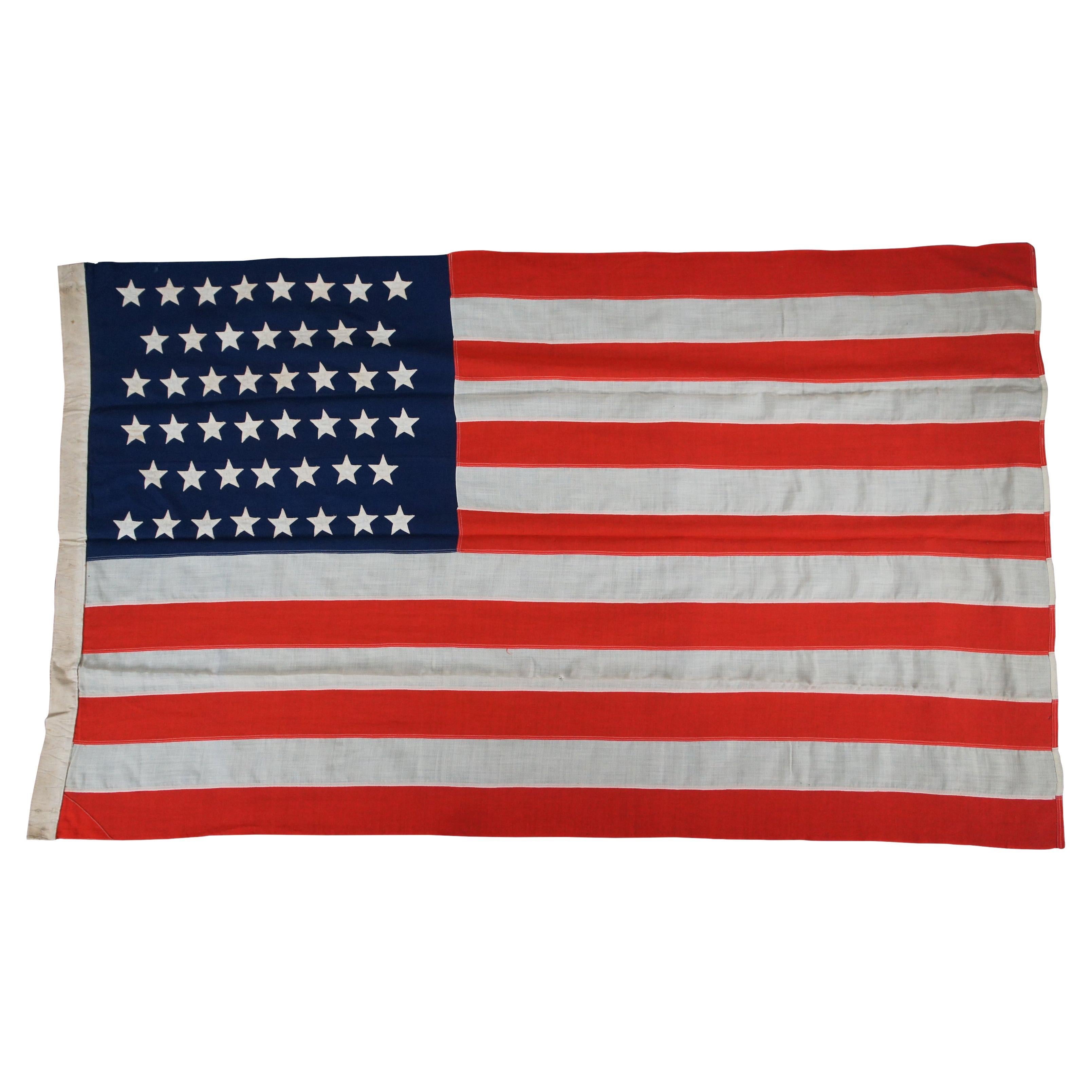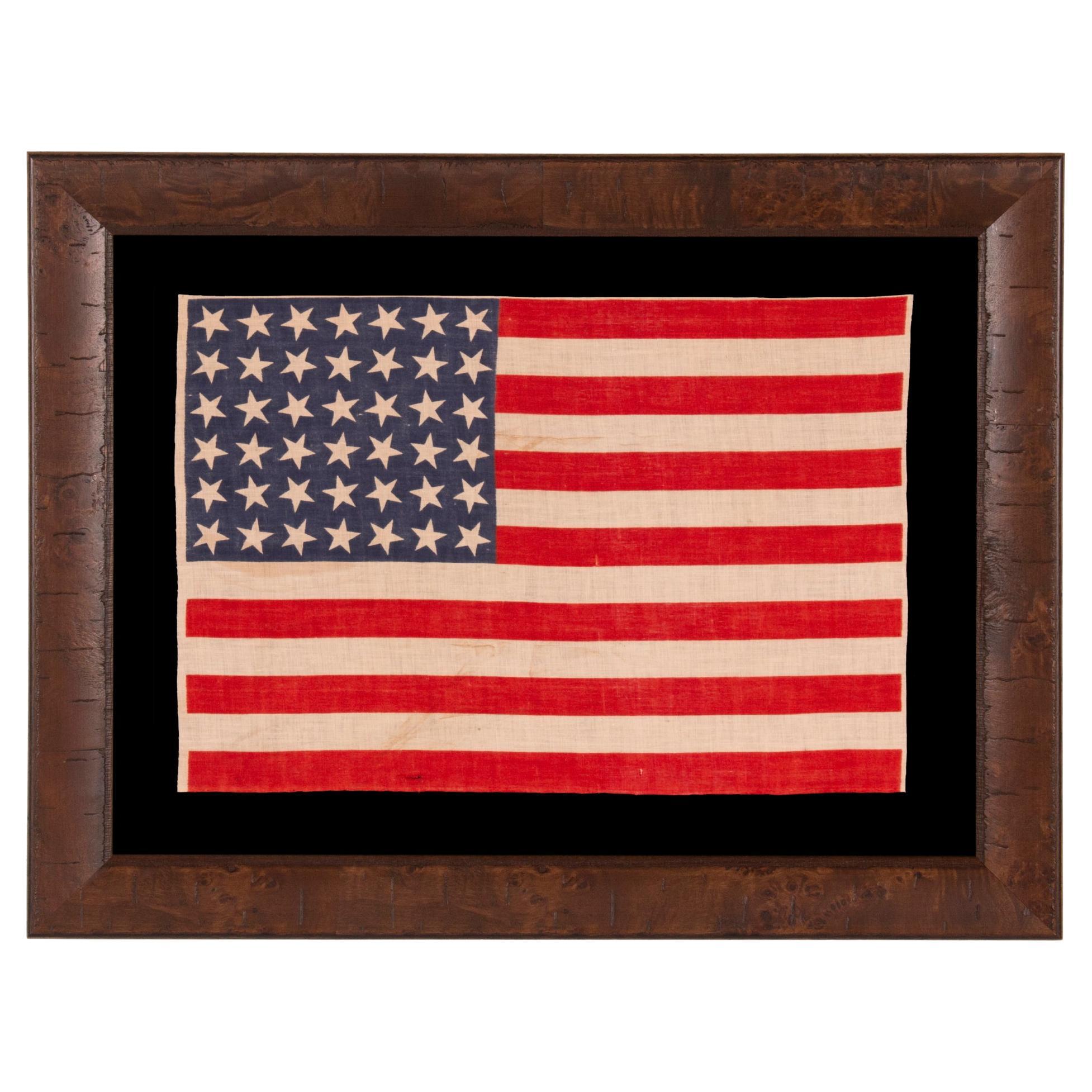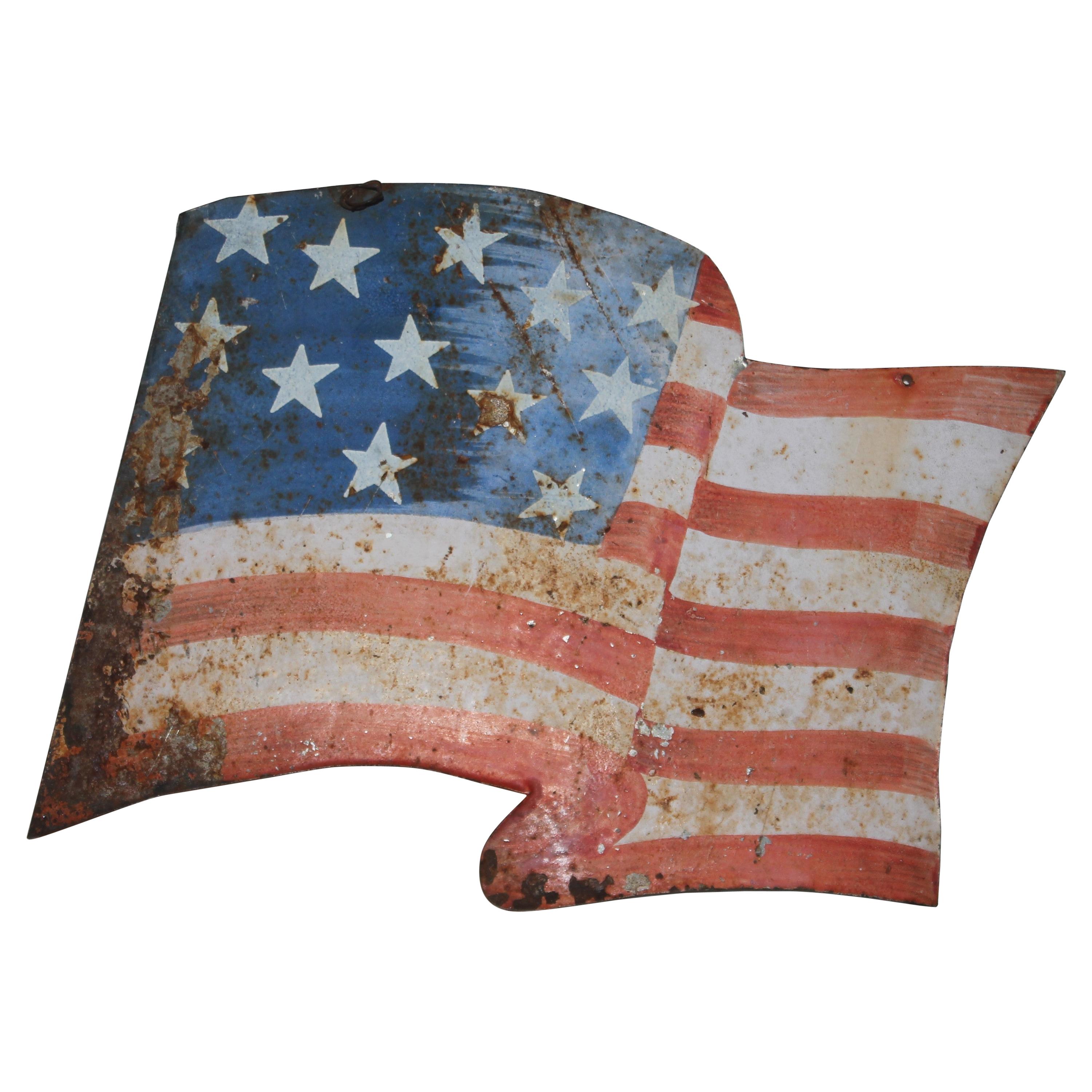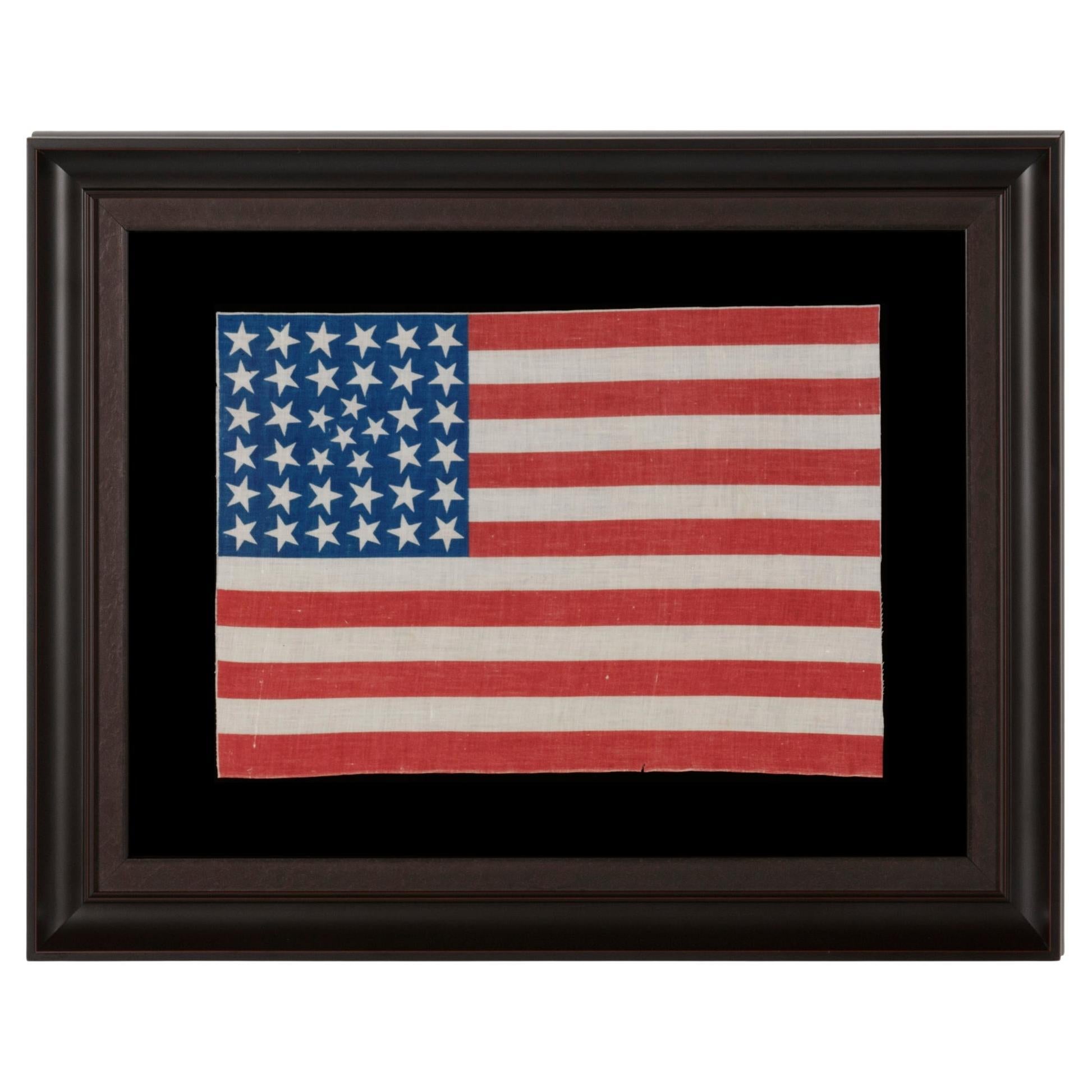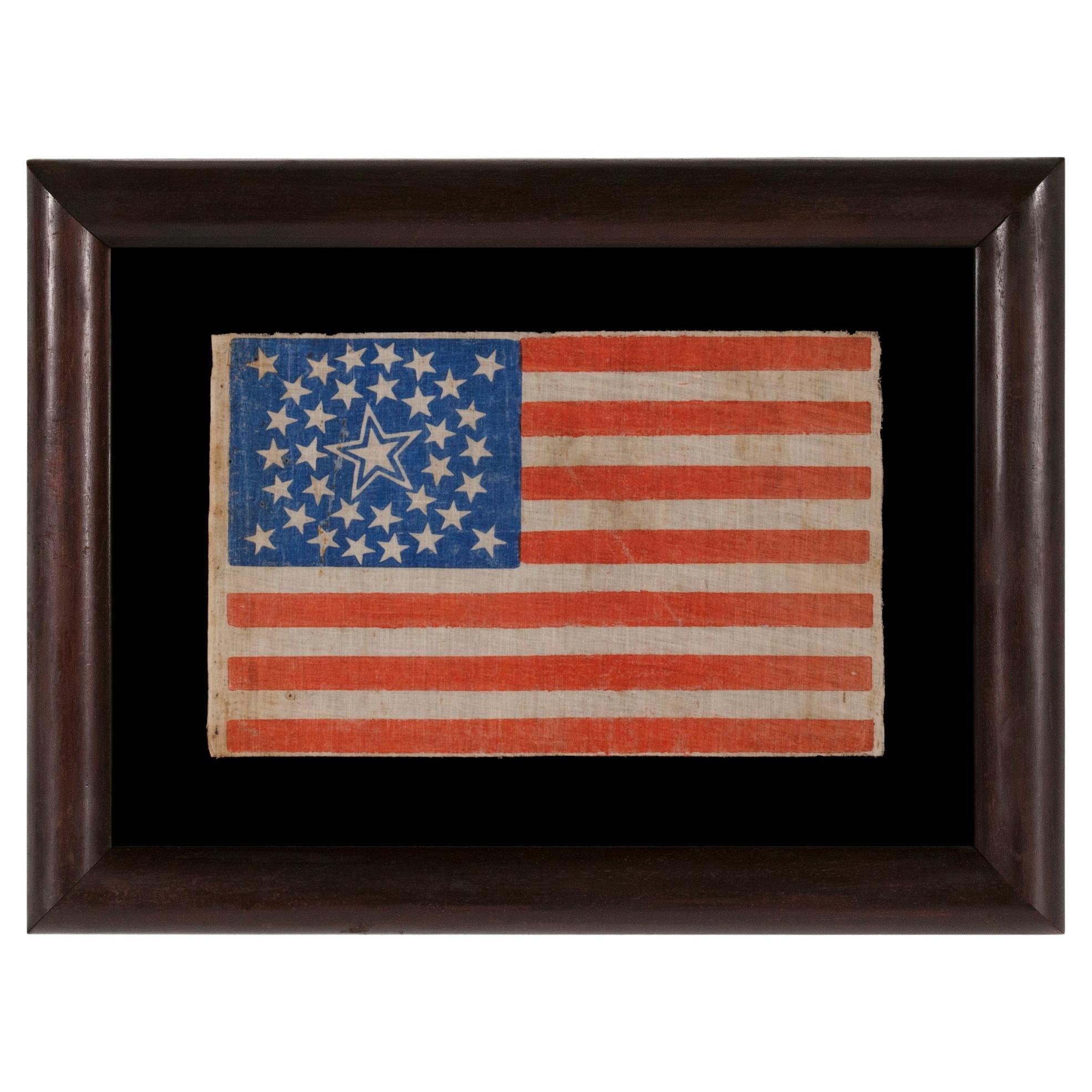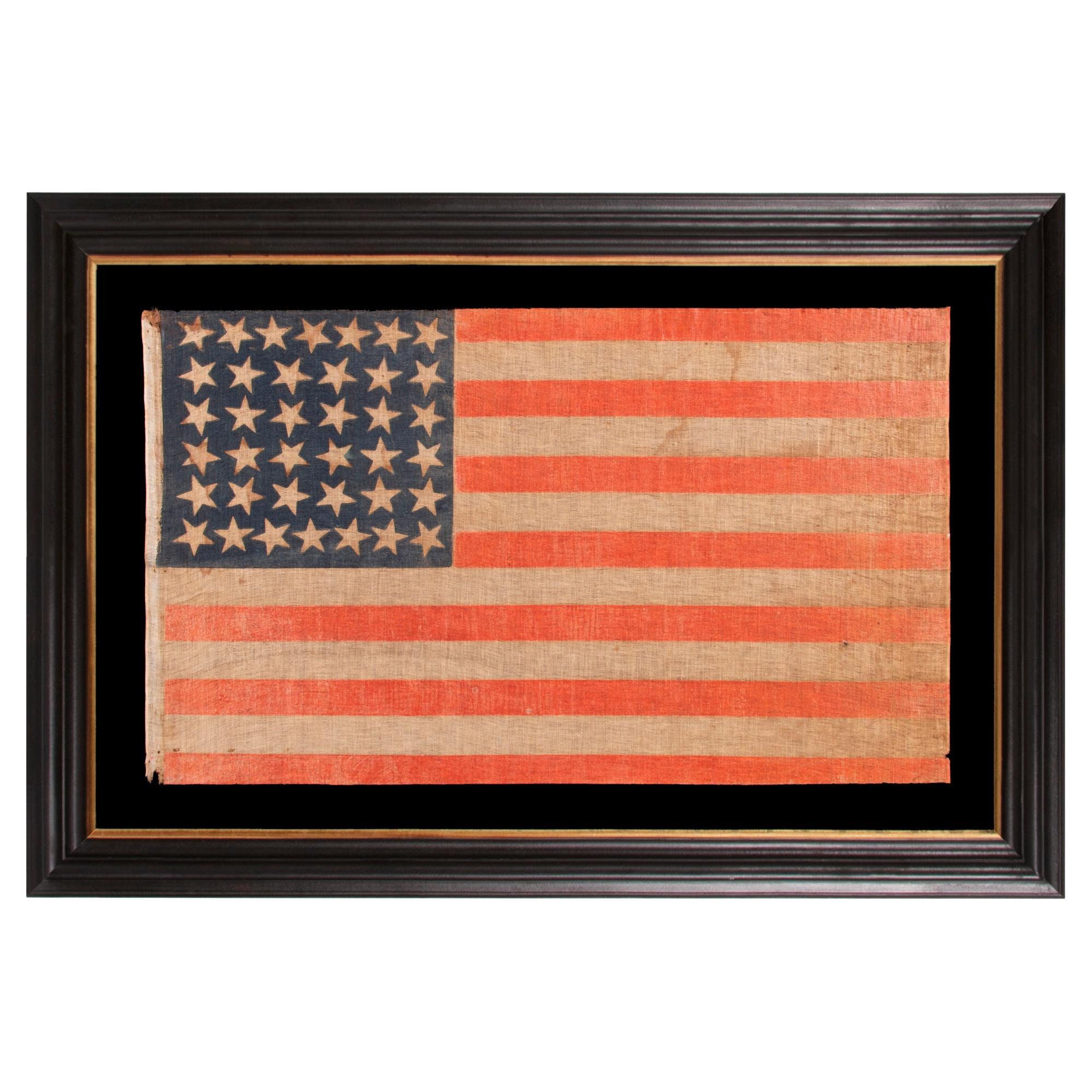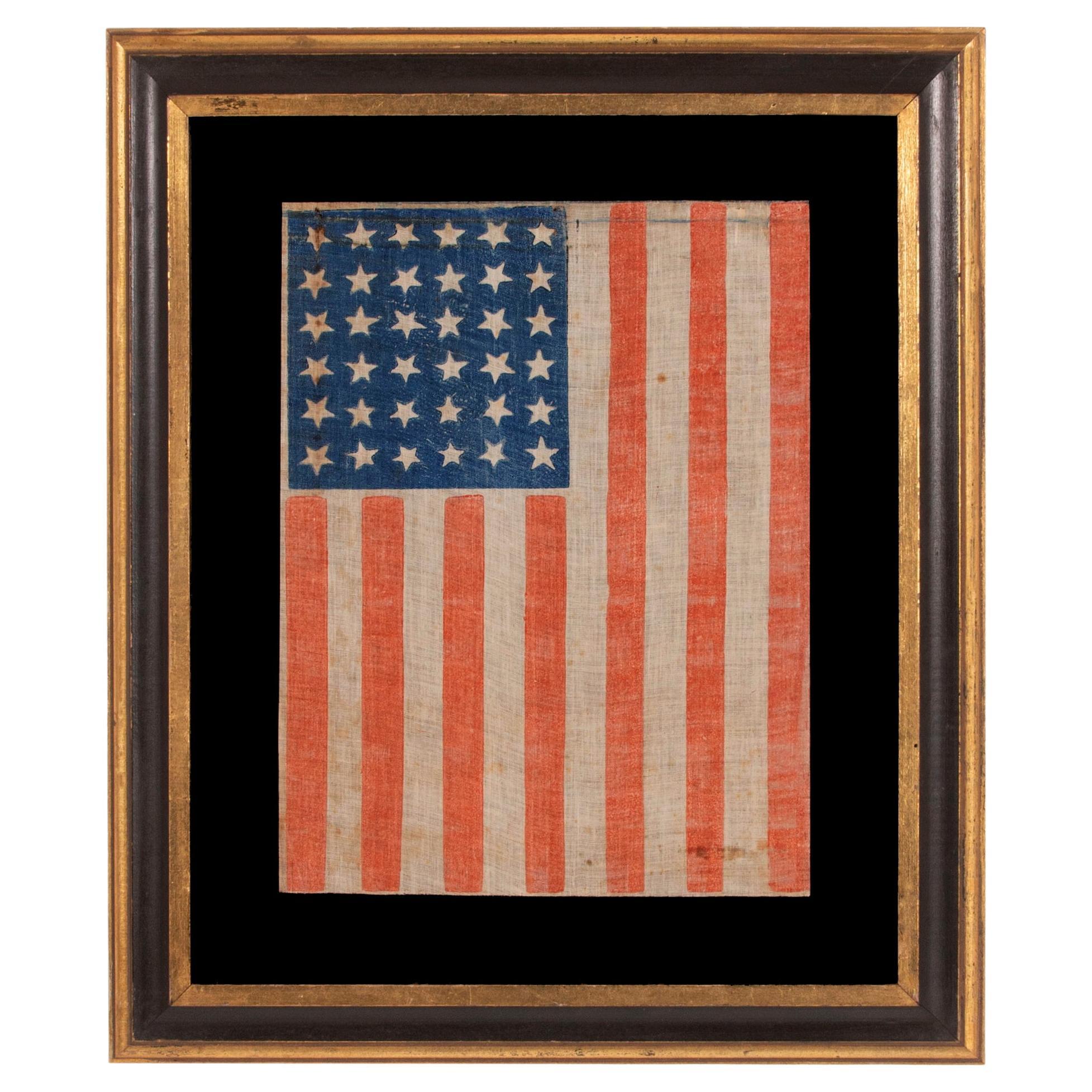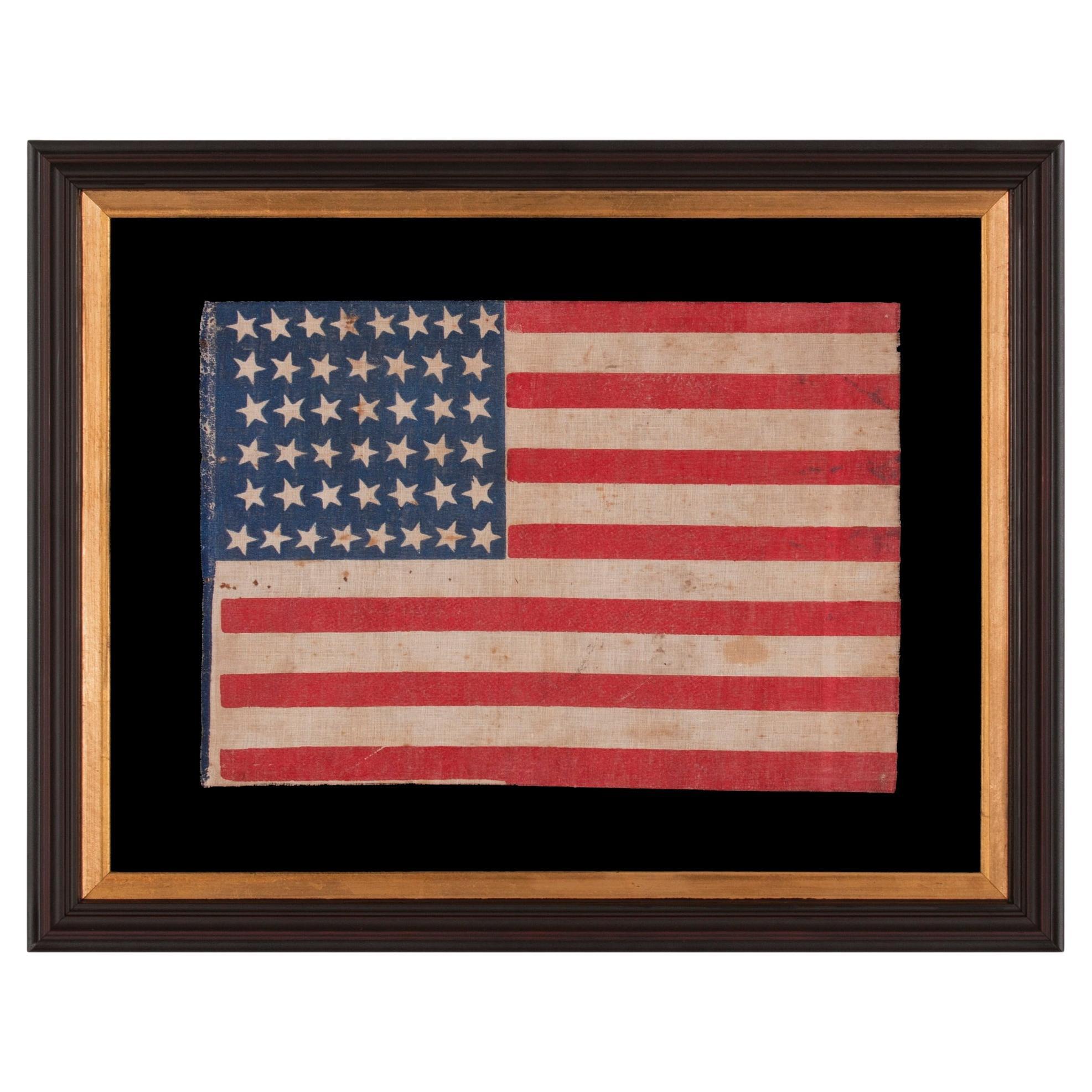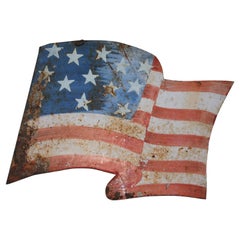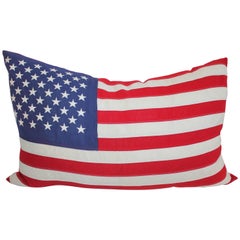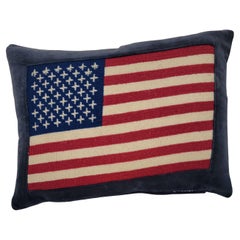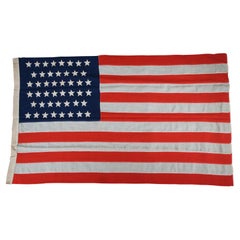
Pair of Framed Mini 46 Star Parade Flags
View Similar Items
Want more images or videos?
Request additional images or videos from the seller
1 of 8
Pair of Framed Mini 46 Star Parade Flags
About the Item
- Dimensions:Height: 6 in (15.24 cm)Width: 7.25 in (18.42 cm)Depth: 1 in (2.54 cm)
- Sold As:Set of 2
- Style:American Classical (Of the Period)
- Materials and Techniques:Cotton,Glazed
- Place of Origin:
- Period:
- Date of Manufacture:1908-1909
- Condition:Wear consistent with age and use. The frames are new custom frames and flags are in fine condition with minor wear consistent with age and use.
- Seller Location:Los Angeles, CA
- Reference Number:Seller: Early 1900's Framed 46 Star Mini Parade Flags1stDibs: LU79717563863
About the Seller
4.9
Platinum Seller
These expertly vetted sellers are 1stDibs' most experienced sellers and are rated highest by our customers.
Established in 1985
1stDibs seller since 2004
1,612 sales on 1stDibs
More From This SellerView All
- Original Painted Metal Parade FlagLocated in Los Angeles, CAThis fun and folky 20thc original painted parade flag sign was used to hand in the windows during patriotic events. In stores and homes in the early 20thc.Category
Antique Late 19th Century American Adirondack Political and Patriotic Me...
MaterialsTin
$1,036 Sale Price20% Off - Large 48 Star Embroidered Flag PillowBy American Flag & Banner Co.Located in Los Angeles, CAThis monumental 48 star flag pillow is in great in great condition and has a red cotton linen pillow. The big pillow id down and feather fill.Category
Mid-20th Century American Country Political and Patriotic Memorabilia
MaterialsCotton
$375 Sale Price36% Off - Early 20thc 48 Star Flag Hand Crochet PillowLocated in Los Angeles, CAThis fine hand crochet 48 star flag pillow is made with a blue velvet background or frame front and back.The insert is down & feather fill.Category
Early 20th Century American Adirondack Pillows and Throws
MaterialsWool
$556 Sale Price20% Off - Framed Hand Sewn Patriotic Sham Made from a Flag and Ship RibbonsLocated in Los Angeles, CAThis Great framed Folk Art sham with 48star flag and ship ribbons is a great patriotic item. The top left corner as well as the bottom right corner are scraps of a 48 star linen flag and in between them are ribbons of ships names that are sewn together in a collage. The American ships span three centuries of ships ribbons, from late 19th century to present day ships. As well as the "USS Utah" which was sunk during the attack on Pearl Harbor. This great and proud sham is not only a great American item but is a Symbol of hope and unity throughout the ages. Serves better as a hanging Folk Art...Category
20th Century American Folk Art Political and Patriotic Memorabilia
MaterialsPlexiglass
$1,195 Sale Price29% Off - Bronze Eagle Bookends Signed and Dated, 1931By Eagle & YoungLocated in Los Angeles, CAThis is an amazing and heavy bronze bookends signed and dated Eagle & Young, 1931. These bookends are in very good condition.Category
Vintage 1930s American American Classical Political and Patriotic Memora...
MaterialsBronze
$716 Sale Price / set20% Off - Patriotic Folky Uncle Sam, Garden OrnamentLocated in Los Angeles, CAHandmade and painted Uncle Sam in all original painted surface.Category
20th Century American Country Political and Patriotic Memorabilia
MaterialsPaint, Wood
$1,320 Sale Price20% Off
You May Also Like
- Antique 46 Star WMH Horstmann Company United States of America Flag 83"By HorstmannLocated in Dayton, OHAntique forty six star large wool American flag by Horstmann Company, circa 1908-1912. Horstmann firm was founded by William H. Horstmann (1785-1850), who had immigrated to Philadelphia from Germany. Horstmann bought out a local swordmaker in 1828 and thereafter entered the military goods field. The firm benefitted from the Civil War, becoming the largest military goods supplier in the nation by 1864. WILLIAM H. HORSTMANN & SONS, Manufacturers of Dress Trimmings and Military Goods. 5th & Cherry Streets, Philadelphia, PA. This house was founded, in 1815, by William H. Horstmann, a native of Cassel, in Germany. He had learned the trade of silk-weaving in France, and, emigrating to the United States in the above-mentioned year, established himself in Philadelphia as a manufacturer of fringe, laces and trimmings of various kinds. He married the daughter of Frederick Hoeckly, a German settler in Philadelphia, and also a manufacturer of fringe, coach-lace and tassels. He devised several improvements in this trade, especially by introducing varieties in the styles and patterns of this class of goods, there being at that time only two patterns used in the trade, which were known as the Jefferson pattern and the Monroe pattern. In 1824, he introduced into this country from Germany the use of plaiting or braiding machines, and about the same time he was the first to introduce into this country the use of the Jacquard loom, for weaving patterns in textile fabrics. His location was in the first instance at No. 50 North Third street, but within a short time he removed to a store next to the Harp and Crown tavern, afterwards known as the City hotel, and continued his business within a short distance of this point for many years. In 1828, he commenced the manufacture of military trimmings as a special department, and this branch has grown to most important proportions, Horstmann's military goods being in demand throughout time country. The firm have also executed large Government contracts in this line for the War and Navy Departments. In 1831, he established a branch house in New York city, and about the same time erected a factory at the corner of Germantown road and Columbia avenue. The factory was continued here until time erection of the extensive building at Fifth and Cherry streets, where the works, salesrooms and offices of time firm now are. This massive structure is six stories high, and extends 140 feet on Fifth street and 200 on Cherry street, and reaches back to Race street. The separate departments into which the business is divided are thirty in number. More than 1000 distinct looms and machines are in use in the building, many of them very costly and some invented and used exclusively by this firm, the motive power being supplied by a steam engine of fifty horse power. The area covered by the works is about 11,000 square feet. Time number of hands employed is very large, about 500. When the erection of a vast factory at this point was first proposed, a strong opposition was made by time holders of the neighboring property. The ancient German Lutheran Church and burying ground, since removed, stood opposite the site, and a bill was introduced into the Legislature to forbid the use of a steam engine within 100 yards of any place of worship. The interests which such a bill would have affected injuriously, especially those of several newspapers, roused a strong opposition to it, and it failed to become a law. In 1845, William H. Horstmann, the founder of the house, retired from the business, and his two sons, William and Sigmund, assumed the management and it was under their direction that the new building, above described, was erected. The goods produced by this house are of almost endless extent and variety. They include goods woven from all the various textile fibres—cotton, wool, silk, etc.—in every style, color and pattern, and are used for an infinite number of purposes. Narrow woven goods are time staple production, made up into material for dresses for both sexes, for use in daily life, and for regalia for ""societies;"" for the costumes of the stage, the upholstering of houses and of carriages, the uniforms of soldiers, together with equipments for the same, and for funeral purposes. The raw material used in the manufacture is to a great extent very costly, and their store rooms often hold as much as $200,000 worth of goods in an unworked state. There are two rooms devoted to power looms in the factory, one for coach lace and one for other styles of weaving, in which about 250 of these machines are constantly running. The braiding machines in the coach lace room are very noteworthy. The cord to be covered with braid is drawn through an opening in time middle of a flat, circular, metallic plate, about 15 inches across. Up to a point on this cord, about a foot above the plate, the threads of the braiding material converge, like the ribs of a tent-roof, and there weave in and out and out and in, as the coating of braid grows, and time covered cord rises and is wound away above. The weaving is accomplished by the motion of the spools below that carry the different threads of the braid. These spools stand in uprights, which are carried round and amongst each other in curved slots in the above-mentioned broad metallic plate. All but two of these spools run in and out among each other, with a swift, easy and intricate motion, mind so rapid that time eye can hardly follow it, while one or two special spools run steadily round and round among time twisting spools with the most extreme swiftness. Many other machines, displaying equally ingenious mechanism, are used in the factory. The various details of equipment manufactured and supplied by this house are also important, both for their number and the superior quality of the manufacture. The one article of swords may be taken as an instance. This trade grew naturally and immediately out of the established army and navy goods department of the works, it being necessary that the sword itself should be furnished together with the sword-belt and other trappings all complete. Every part of the sword and trappings, with the exception of the blade, is made on the premises. The blades are almost all imported from the ancient German sword-blade emporium of Solingen, where, it is said, swords have been made ever since the year 1147, when Count Adolphus of Berg brought home from the East and established there the business of forging Damascus blades. There is in this department a stock of some thousands of blades, of many different patterns and sizes, ready to be set and finished. Any style or sword can be had from this warehouse, from the plainest kind up to a presentation sword...Category
Vintage 1910s American Classical Political and Patriotic Memorabilia
MaterialsWool
- 46-Star American Flag Printed in Drum Star ConfigurationLocated in Colorado Springs, COThis is an original 46-Star American parade flag, celebrating Oklahoma statehood. Each star on the flag's canton represents a state in the Union at the time. The official flag design would update every July 4th, to include any new states added to the Union in the past year. Oklahoma, the 46th state, entered the Union on November 16, 1907. As such, this 46–star flag was the official flag of the United States from July 4, 1908, until July 4, 1912. The silk flag has a dark blue canton with 46 white printed stars. The stars are printed in an 7-8-8-8-8-7 row configuration, or “Drum design.” The flag design is completed with 13 alternating red and white stripes, each stripe representing one of the original thirteen colonies. The land that comprises Oklahoma today was added to the United States as part of the Louisiana Purchase of 1803. Throughout the 19th century, the U.S. government relocated Indian tribes from the southeastern United States to the area, and by 1900, over 30 Indian tribes had been moved to what was originally called the Indian Territories. At the same time, ranchers in Texas began to move into the area in search of new pasture lands. Although stipulations in the Indian Relocation Act agreed that the land would forever be Indian Territory, the promise of fertile farmland trumped the government’s promise of sovereignty. On April 22, 1889, they opened the land to settlement by homesteaders, creating a land run in which settlers, called “Boomers,” were allowed to cross the Texas or Arkansas border at a particular hour to claim homesteads. Settlers who illegally crossed the border earlier to stake prime land were called “sooners,” which eventually became the state’s nickname. Wagons and the Santa Fe railroad carried cartloads of men and women to blank town sites and building plots, creating ten thousand-people communities in a matter of days. The following year, the region was further divided into Indian Territory and Oklahoma Territory...Category
Vintage 1910s American Political and Patriotic Memorabilia
MaterialsSilk
- 42 Star Antique American Parade Flag, Ca 1889-1890Located in York County, PA42 STARS ON AN ANTIQUE AMERICAN FLAG WITH SCATTERED STAR POSITIONING, REFLECTS THE ADDITION OF WASHINGTON STATE, MONTANA, AND THE DAKOTAS, NEVER AN OFFICIAL STAR COUNT, circa 1889-18...Category
Antique Late 19th Century American Political and Patriotic Memorabilia
MaterialsCotton
Price Upon Request - 38 Star Parade Flag with Whimsical 6-Pointed Stars, Colorado StatehoodLocated in York County, PA38 WHIMSICAL STARS, WITH 6-POINTED PROFILES, SIMILAR TO THE STAR OF DAVID, ON AN ANTIQUE AMERICAN FLAG OF THE CENTENNIAL ERA; A REMARKABLE SPECIMEN, ONE-OF-A-KIND AMONG KNOWN EXAMPLE...Category
Antique Late 19th Century American Political and Patriotic Memorabilia
MaterialsCotton
Price Upon Request - 38 Star Antique American Parade Flag, Colorado Statehood, ca 1876-1889Located in York County, PA38 STARS IN AN EXTREMELY UNUSUAL CONFIGURATION THAT BEARS A CLUSTER OF 6 SMALL STARS WITHIN A LINEAL PATTERN OF LARGER STARS, 1876-1889, COLORADO STATEHOOD 38 star American national parade flag, printed on cotton. This is an extremely rare example of a lineal pattern flag with a wreath or cluster of smaller stars inserted in the center. A very small number of flags in this style are known to have survived, the colors of which are typically saturated and vibrant, like this example, in scarlet red and rich, royal blue. The particular wreath in the center of the configuration is really more of a pentagon with a single, center star. The reason for the choice of the design and 6 smaller stars seems a curious one on the surface, but its purpose was probably nothing more than to simply augment a 36 star print block to one with 38 stars. One may observe how 4 stars, that would have comprised the center of a 6 x 6 pattern, could have simply been removed and 6 smaller stars inserted in their place, in an artful fashion. At least two other similar 38-star patterns are known that incorporate 4 small stars intermingled between rows of what most certainly were two very similar 34-star flag print blocks originally. It was easier to modify these blocks rather than create brand new ones. In these particular instances, the results are rare, quirky configurations that are highly prized by collectors. Colorado became the 38th state on August 1st, 1876. This was the year of our nation’s 100-year anniversary of independence. Per the Third Flag Act of 1818, stars were not officially added until the 4th of July following a state's addition. For this reason, 37 was the official star count for the American flag in 1876. Flag-making was a competitive venture, however, and few flag-makers would have been continuing to produce 37 star flags when their competitors were making 38’s. It is for this reason that 38 and 13 stars (to represent the original 13 colonies) are more often seen at the Centennial International Exposition, the six-month long World’s Fair held in Philadelphia in honor of the event. Some flag-makers would have been adding a star for the 38th state even before it entered the Union, in the early part of 1876 or even prior. In fact, many makers of parade flags were actually producing 39 star flags, in hopeful anticipation of the addition of two more Western Territories instead of one. But the 39th state would not join the Union for another 13 years, when the Dakota Territory entered as two states on the same day. The 38 star flag became official on July 4th, 1877 and was generally used until the addition of the Dakotas in 1889. Provenance: Jeff R. Bridgman Antiques to the late collector Jim Ring...Category
Antique Late 19th Century American Political and Patriotic Memorabilia
MaterialsCotton
Price Upon Request - 36 Star Antique American Parade Flag, Nevada Statehood, ca 1864-1867Located in York County, PA36 STAR ANTIQUE AMERICAN PARADE FLAG WITH CANTED STARS IN DANCING ROWS, ON A BEAUTIFUL, CORNFLOWER BLUE CANTON; CIVIL WAR ERA, NEVADA STATEHOOD, 1864-1867 36 star antique American f...Category
Antique 1860s Political and Patriotic Memorabilia
MaterialsCotton
Price Upon Request
